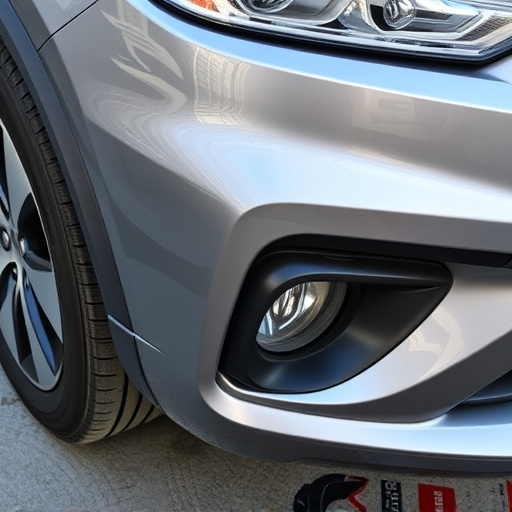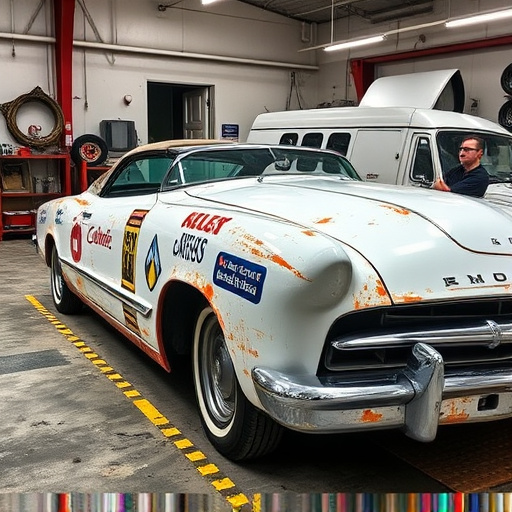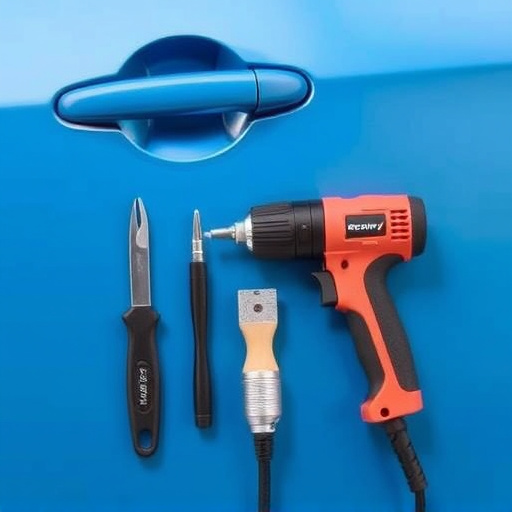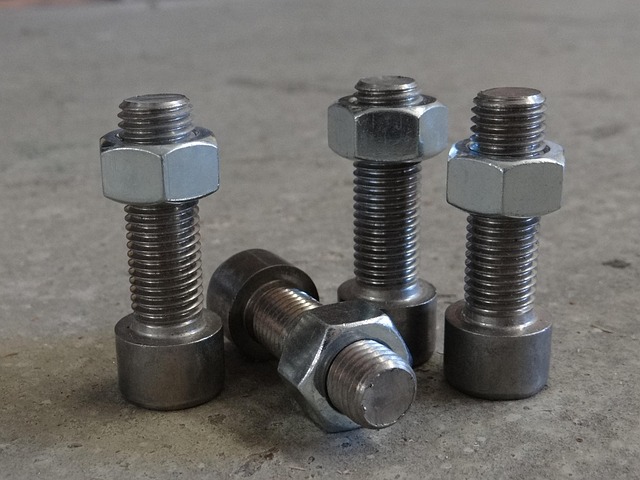Mercedes carbon fiber trim, known for its strength and durability, requires specialized repair due to its complex structure. Techniques range from polishing minor scratches to advanced composite repairs for chips and cracks. Skilled technicians use specialized tools and precise methods to ensure seamless integration with the vehicle's original design. Specialized body shops offer effective Mercedes carbon fiber trim repair services, maintaining the car's value and aesthetic appeal.
In the realm of luxury automotive craftsmanship, Mercedes-Benz has long been renowned for its intricate details. One such standout feature is the brand’s utilization of carbon fiber trim, adding a sleek and lightweight touch to interiors. However, this sophisticated material is not immune to damage. This article explores the intricacies of Mercedes carbon fiber trim repair, delving into common issues, repair techniques, and the specialized tools that enable restoration of these exquisite interior elements.
- Understanding Mercedes Carbon Fiber Trim: Materials and Structure
- Common Damage Scenarios and Their Repair Techniques
- Specialized Tools for Precise and Effective Repairs
Understanding Mercedes Carbon Fiber Trim: Materials and Structure

Mercedes carbon fiber trim is a signature feature on many high-end vehicles, offering both aesthetic appeal and structural integrity. Comprised of layers of carbon fibers impregnated with resin, this material is known for its exceptional strength-to-weight ratio and durability, making it a popular choice in automotive design. Unlike traditional metal panels, carbon fiber trim is lightweight yet remarkably rigid, contributing to improved vehicle handling and fuel efficiency.
The intricate structure of Mercedes carbon fiber trim demands specialized care during repairs. Damage can range from small scratches and dents to more significant cracks or delaminations. Repairs often involve meticulous techniques such as composite repair methods, including sanding, priming, and layering of carbon fiber patches or pre-preg sheets. Skilled technicians in a reputable vehicle body shop use these tools and expertise to match the original trim’s texture, color, and finish, ensuring seamless integration back into the vehicle, be it during a car restoration or routine maintenance.
Common Damage Scenarios and Their Repair Techniques

Carbon fiber trim is a popular choice for automotive manufacturers due to its lightweight strength and sleek aesthetics. However, this material is susceptible to damage, especially in Mercedes vehicles known for their high-quality finishes. Common scenarios include nicks, scratches, chips, and even small cracks caused by impacts or curbs during parking or driving. For minor damages like nicks and scratches, a Mercedes carbon fiber trim repair might involve using specialized polishing compounds and machinery to smoothen the surface and restore its original gloss.
For more extensive damage such as chips or cracks, a collision repair center often employs advanced techniques. This may include resin injection or composite repair methods where a matched carbon fiber patch is molded and bonded over the damaged area. These repairs require skilled technicians who understand the unique properties of carbon fiber to ensure a structurally sound and aesthetically pleasing fix, matching the high standards expected from premium automotive brands like Mercedes. Auto repair services specializing in carbon fiber trim can offer effective solutions for these scenarios, preserving the vehicle’s value and appearance.
Specialized Tools for Precise and Effective Repairs
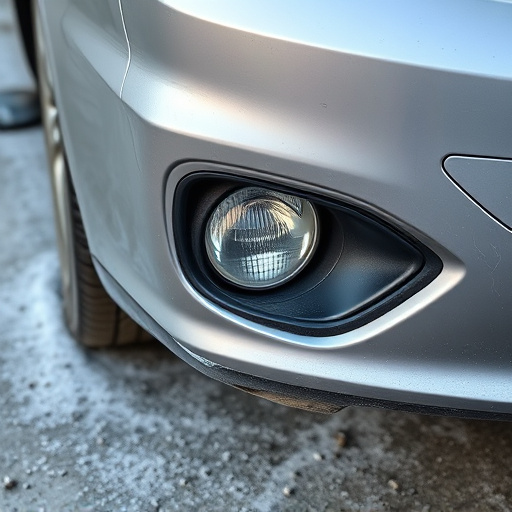
When it comes to Mercedes carbon fiber trim repair, specialized tools play a pivotal role in achieving precise and effective results. These tools are designed to cater to the unique challenges posed by carbon fiber’s intricate structure and delicate nature. Auto collision repair professionals rely on precision knives and cutting tools that allow for meticulous trimming and shaping of damaged trim pieces without compromising the integrity of the carbon fiber composite.
Additionally, vacuum bagging systems and specialized clamps ensure a secure holding environment during the repair process, facilitating accurate alignment and curing of the restored components. This level of tool sophistication is essential in an automotive body shop where the goal is not just to fix, but to restore vehicles to their original sleek and vibrant states, much like vehicle paint repair experts meticulously work on the outer layers.
In conclusion, repairing Mercedes carbon fiber trim effectively requires a deep understanding of its unique materials and structure, as well as specialized tools. By mastering common damage scenarios and their respective repair techniques, professionals can ensure precise and lasting results. When it comes to Mercedes carbon fiber trim repair, the right tools make all the difference in achieving a seamless and high-quality finish.


